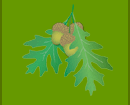 |
 |

|
|
|
 |
Paintings
Australasia

Cause for concern in Australasia
| Australasia • Tropical and Subtropical Moist Broadleaf Forests |
 |
 |
Southern New Guinea freshwater swamp forests
Although this ecoregion does not face many immediate threats, potential problems include logging, traditional agriculture, oil and gas development, and the expansion of subsistence coffee areas. The Raggiana bird of paradise is hunted for sale and trade as well. No analysis has been conducted to determine whether the ecoregions existing protected areas adequately cover all of its important habitats. Lake Kutubu, with its unique fish community, could be threatened by oil spills from growing development nearby. |
| Download - Full Size (PayPal) |
|
|
|
|
|
Painting 0105 |
National Geographic's Wildworld |
| Australasia • Tropical and Subtropical Moist Broadleaf Forests |
 |
 |
Sulawesi lowland rain forests
More than half of this ecoregions original forest has been cleared, with only a few fairly large tracts remaining. Agriculture, irrigation schemes, quarrying, and human-induced fire are ongoing threats to native forests. Repeated burnings have resulted in permanent grasslands in some areas and savannas with fire-resistant trees in others. |
| Download - Full Size (PayPal) |
|
|
|
|
|
Painting 0106 |
National Geographic's Wildworld |
| Australasia • Tropical and Subtropical Moist Broadleaf Forests |
 |
 |
Sulawesi montane rain forests
This ecoregion is still largely intact, with about three-quarters of the original habitat remaining. Steep slopes and the relative lack of commercially valuable trees have discouraged logging activity. Where logging has occurred, however, extensive erosion has clogged rivers, streams, and irrigation fields in the valleys down below. Hunting, logging, and human-induced fires will continue to be threats in the future. |
| Download - Full Size (PayPal) |
|
|
|
|
|
Painting 0107 |
National Geographic's Wildworld |
| Australasia • Tropical and Subtropical Moist Broadleaf Forests |
 |
 |
Trobriand Islands rain forests
The main threats to the ecoregion include logging by foreign companies and conversion of habitat into agricultural lands. Both the dorcopsis and the cuscus are endangered. |
| Download - Full Size (PayPal) |
|
|
|
|
|
Painting 0108 |
National Geographic's Wildworld |
| Australasia • Tropical and Subtropical Moist Broadleaf Forests |
 |
 |
Vanuatu rain forests
Threats to this ecoregion come from nature and humans alike. Cyclones, volcanic eruptions, and earthquakes are all regular natural events here, but their effects can be worsened by the human disturbance of native habitats. Ninety percent of the population of this ecoregion is involved in subsistence farming in rural areas, and remaining forests are under pressure from logging companies and larger scale plantation farms as well. This ecoregion contains no formally protected areas. |
| Download - Full Size (PayPal) |
|
|
|
|
|
Painting 0109 |
National Geographic's Wildworld |
| Australasia • Tropical and Subtropical Moist Broadleaf Forests |
 |
 |
Vogelkop montane rain forests
Most of the habitat in this ecoregion is still intact. However, a small area in the eastern portion has been cleared, and logging is a continuing threat in the Tamarau Mountains. Population growth and agricultural development encroach on native forests as well. |
| Download - Full Size (PayPal) |
|
|
|
|
|
Painting 0110 |
National Geographic's Wildworld |
| Australasia • Tropical and Subtropical Moist Broadleaf Forests |
 |
 |
Vogelkop-Aru lowland rain forests
About 90 percent of the natural habitat in this ecoregion is still intact. Still, logging concessions are encroaching into protected areas. And population growth, agricultural development, and fire pose increasing threats as well. Hunting is a continuing problem for the western crowned-pigeon and certain other bird species. |
| Download - Full Size (PayPal) |
|
|
|
|
|
Painting 0111 |
National Geographic's Wildworld |
| Australasia • Tropical and Subtropical Dry Broadleaf Forests |
 |
 |
Lesser Sundas deciduous forests
More than half of this ecoregions natural habitat has been cleared, mainly for agriculture. Increasing population pressure has resulted in high rates of deforestation. In the dry season, fires are often set to clear the understory and encourage new growth as forage for domestic animals. Still, this ecoregion contains Komodo National Park, an important protected area and a popular tourist attraction that harbors the Komodo dragon. |
| Download - Full Size (PayPal) |
|
|
|
|
|
Painting 0112 |
National Geographic's Wildworld |
| Australasia • Tropical and Subtropical Dry Broadleaf Forests |
 |
 |
New Caledonia dry forests
Tropical dry forests are the most threatened tropical forests worldwide, and those of New Caledonia are no exception. With less than two percent remaining, the dry forests are the most endangered form of habitat on the island. Intentionally ignited fires, trampling by cattle, and the introduction of alien species such as fire ants pose the greatest threats to the few remaining patches of dry forest. |
| Download - Full Size (PayPal) |
|
|
|
|
|
Painting 0113 |
National Geographic's Wildworld |
| Australasia • Tropical and Subtropical Dry Broadleaf Forests |
 |
 |
Sumba deciduous forests
Almost 75 percent of this ecoregion has been cleared, mostly for agriculture. Only a few relatively small, scattered patches of intact forest remain. Livestock grazing, poaching, and burning of grasslands to establish agricultural fields are ongoing threats. Some forest types that are especially vulnerable to fire such as the dry thorn forest have almost completely disappeared. |
| Download - Full Size (PayPal) |
|
|
|
|
|
Painting 0114 |
National Geographic's Wildworld |
All paintings © Copyright EqualEarth.com on behalf of Van Xilef.
Australasia
|
 |
 |
|
 |
|

